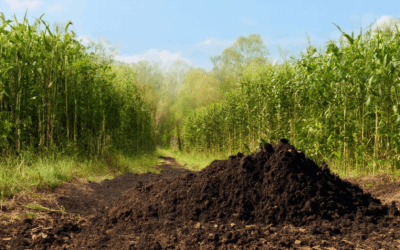Effective green waste management strategies are essential for creating a more sustainable and eco-friendly world. As environmental awareness grows, so does the need for innovative solutions to handle green waste responsibly. Whether you’re running a business, managing a community, or simply looking to reduce your ecological footprint, understanding the best practices for green waste management is crucial. This article dives into the key strategies, tools, and practices that can help you tackle green waste effectively, from reducing waste generation to proper disposal methods. By exploring everything from the 3 R’s of waste management to real-world case studies and community involvement, this comprehensive guide offers actionable insights to help you make a positive impact on the environment. Stay tuned to discover how you can implement efficient green waste management strategies that align with your goals and contribute to a healthier planet.

What Are the 5 Waste Management Approaches?
The 5 primary waste management approaches are Refuse, Reduce, Reuse, Repurpose, and Recycle. These methods form the foundation of effective waste management systems, helping to minimize environmental impact and promote sustainability.
- Refuse : This involves refusing to generate waste in the first place by reducing consumption and avoiding unnecessary purchases.
- Reduce : Minimizing waste generation through efficient resource use and scaling back on non-essential activities.
- Reuse : Finding ways to repurpose materials and products to extend their lifecycle, preventing them from becoming waste.
- Recycle : Processing waste materials into new products and raw materials, contributing to a circular economy.
- Repurpose : Transforming waste into something useful, often through creative processes like upcycling or converting it into energy.
Each of these approaches plays a crucial role in creating a more sustainable future and reducing the strain on landfills and natural resources. By adopting these methods, individuals and organizations can significantly contribute to waste reduction efforts and promote eco-friendly practices.
What are the 3 R’s in green management?
The three main principles of green management are:
- Reduce : Minimizing resource consumption by using fewer materials and energy.
- Reuse : Finding new purposes for items that would otherwise be discarded to extend their lifecycle.
- Recycle : Processing materials that cannot be reduced or reused into new products.
These principles aim to minimize environmental impact by promoting sustainability and reducing waste.

Best Way to Deal with Green Waste
Green waste, such as grass clippings, leaves, and garden trimmings, can be managed effectively through composting or recycling programs. Here’s a structured approach:
- Check Local Guidelines:** Begin by consulting your local council for specific regulations on compostable materials and disposal methods. They may have separate bins or programs for green waste.
- Composting Setup:** Composting is an excellent option. Start by verifying which materials are compostable, such as grass clippings, leaves, and some plants. Avoid invasive species or certain vegetables. – Layer materials alternately: green (e.g., grass) and brown (e.g., leaves). – Maintain regular turning of the pile to accelerate decomposition. – Consider using a compost bin, especially for worm composting, which is ideal for small spaces.
- Recycling Options:** If composting isn’t feasible, explore municipal recycling programs. Many areas offer curbside pickup for green waste, making disposal convenient.
- Large Items Handling:** For tree stumps or large branches, check if local facilities accept these or require chipping. If you lack equipment, seek alternatives or facility assistance.
- Environmental Impact:** Proper disposal reduces landfill contributions, minimizing methane release and pollution. Choose methods that align with sustainability goals.
- Community Resources:** Consider joining local composting groups or participating in city-wide programs for better resources and support.
By following these steps, you can manage green waste responsibly, promoting environmental health and efficiency.

What is Green Waste Management?
Green waste management refers to the systematic collection, processing, and disposal of organic waste materials that can be composted. This type of waste typically includes food scraps, yard trimmings, and plant-based waste. Effective green waste management is crucial for reducing landfill dependency, minimizing environmental impact, and promoting sustainable resource utilization.
The Process of Green Waste Management
- Collection: Green waste is collected from residential, commercial, or industrial sources and placed in dedicated bins, often labeled as “green bins” or “compost bins.” These bins are typically provided by local governments or waste management companies.
- Transportation: Collected green waste is transported using specialized vehicles designed for organic waste handling. These vehicles often operate as part of municipal recycling programs or private waste management services.
- Processing: The waste undergoes composting or anaerobic digestion at facilities specifically designed for organic waste. Composting converts organic materials into nutrient-rich soil amendments, while anaerobic digestion produces biogas and a residual material that can be used as fertilizer.
- Disposal: The final product of composting or anaerobic digestion is distributed for use in agriculture, landscaping, or other applications. This reduces the need for synthetic fertilizers and enhances soil health.
Benefits of Green Waste Management
- Reduces landfill waste and associated methane emissions.
- Creates valuable resources such as compost and biogas.
- Supports sustainable agricultural practices and environmental conservation.
- Contributes to a circular economy by minimizing waste and maximizing resource recovery.
By implementing green waste management programs, communities can significantly reduce their environmental footprint and promote eco-friendly practices.
Effective Strategies for Managing Green Waste
Managing green waste involves adopting sustainable practices to minimize its environmental impact. Here are some organized approaches:
- Composting: A highly effective method, composting transforms organic waste into nutrient-rich soil. Layer materials like grass clippings, fruit peels, and coffee grounds in a compost bin, located in a shaded area for moisture. Regular turning and watering accelerates decomposition.
- Local Recycling Programs: Utilize city services for curbside pickup of compostable materials. Check if food scraps and yard waste are accepted and use compost bins or worm farms for smaller quantities.
- Landfill Disposal: While less ideal, this method is necessary for some waste. Collect green waste separately and transport it to landfills, though it’s important to note the environmental trade-offs.
- Aerobic vs. Anaerobic Composting: Choose between methods based on availability. Aerobic requires oxygen, speeding up decomposition, while anaerobic processes occur without air, suitable for specific materials.
- Mulching and Integration: Use composted green waste as mulch or till earth before planting to enhance soil health and reduce chemical use.
- Industrial Solutions: Businesses, particularly restaurants, can employ industrial composting bins and donate excess food to shelters. Implementing recycling and composting programs in workplaces reduces waste effectively.
- Educational Initiatives: Promote awareness through community workshops and online resources to encourage sustainable practices and responsible waste management.
- Local Regulations: Investigate area-specific guidelines and incentives for composting and recycling green waste, supporting nearby facilities that accept organic materials.
By integrating these strategies, individuals and communities can significantly reduce their environmental footprint and promote sustainable living.

What is Green Management Practices?
Green management practices refer to the proactive strategies businesses employ to minimize their environmental footprint while achieving operational efficiency. These practices focus on reducing pollution, waste, and resource consumption through sustainable methods.
Key Components of Green Management
- Energy Efficiency : Implementing energy-efficient technologies and processes to reduce power consumption. Companies often invest in solar panels, LED lighting, and energy-saving machinery to lower their carbon footprint.
- Waste Reduction : Adopting zero-waste policies and implementing recycling programs to minimize landfill contributions. Businesses may also explore upcycling opportunities to repurpose materials.
- Renewable Energy : Transitioning to renewable energy sources like solar, wind, or hydropower to offset reliance on fossil fuels.
- Water Conservation : Implementing water-saving techniques and treatment systems to reduce freshwater usage and contamination.
- Sustainable Sourcing : Selecting suppliers and materials that align with environmental standards, ensuring ethical and sustainable practices throughout the supply chain.
Benefits of Green Management
- Cost Savings : Many green practices lead to long-term financial savings through reduced resource costs and operational efficiencies.
- Brand Reputation : Enhancing corporate social responsibility (CSR) image, which can boost customer loyalty and market position.
- Regulatory Compliance : Meeting environmental regulations and preparing for future policy changes.
Examples of Green Management in Action
- Energy Efficiency : Companies like Tesla and Philips have successfully integrated solar and energy-efficient technologies into their operations.
- Waste Reduction : Patagonia and Eileen Fisher are known for their innovative waste reduction initiatives and recycling programs.
- Renewable Energy : Google and Microsoft have made significant strides in adopting wind and solar energy to power their data centers.
By embracing green management practices, businesses contribute to a healthier planet while achieving sustainable growth. These efforts not only benefit the environment but also foster innovation and resilience in the long term.




0 Comments